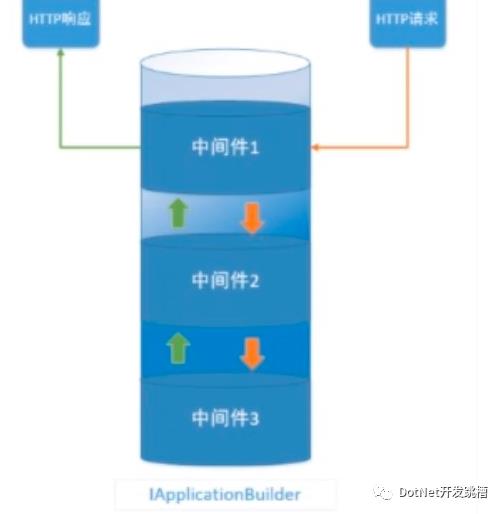.NET Core 管道模型中间件及管道模拟实现
Posted DotNet开发跳槽
tags:
篇首语:本文由小常识网(cha138.com)小编为大家整理,主要介绍了.NET Core 管道模型中间件及管道模拟实现相关的知识,希望对你有一定的参考价值。
管道,Pipeline
ASP.NET Core 路由,认证,绘画,缓存,都是由管道来处理的中间件。
MVC WEB API,都是建立在某个特殊的中间件之上。
编写中间件来扩展请求管道,可以在AP.NET Core基础之上,创建自己的Web框架。
中间件Middleware,两个职责:
1 选择是否将请求传递给管道种的下一个中间件
2 在管道种的下一个中间件的前后执行工作。
每一个中间件都有权做出决定是否将请求传递给下一个中间件,也可以直接做出响应,促使管道短路。
短路就是指不再将请求继续往下传递,而是结束请求并开始响应。短路是非常有必要的,避免很多不必要的工作。

http请求被层层处理和控制,层次清晰,处理起来非常方便
ASP.NET MVC里的过滤器Filter和中间件都是AOP思想的产物。定位和关注点不一样。
过滤器关注的是如何实现功能(非业务),它是一种功能。
中间件是ASP.NET Core管道模型中的重要组成部分,担负了整个请求到响应的处理流程。
过滤器实现的功能,只是中间件顺带表现出来的。
如何布置管道?在管道里布置中间件。
中间件是有顺序的,添加中间件的顺序就是请求调用这些中间件的顺序。
请求和响应,方向是相反的,顺序自然也是相反的。
顺序很重要。有的中间件无所谓,有的中间件必须有顺序。
内置中间件直接use就可以用了。
自定义中间件。约定:具有类型为RequestDeletegate的参数的公共构造函数。
下面是模拟实现管道的代码,参考了.NET CORE 3.0里管道的实现方式。

Program.cs类代码
1 2 3 4 5 6 7 8 9 10 11 12 13 14 15 16 17 18 19 20 21 22 23 24 25 26 27 28 29 30 31 32 33 |
|
ApplicationBuilder.cs类代码
1 2 3 4 5 6 7 8 9 10 11 12 13 14 15 16 17 18 19 20 21 22 23 24 25 26 27 28 29 34 |
|
HttpContext.cs类代码,仅为模拟,所以没有属性
1 2 3 4 5 6 7 8 9 10 |
|
运行效果
出处:https://www.leavescn.com/Articles/Content/1158
以上是关于.NET Core 管道模型中间件及管道模拟实现的主要内容,如果未能解决你的问题,请参考以下文章